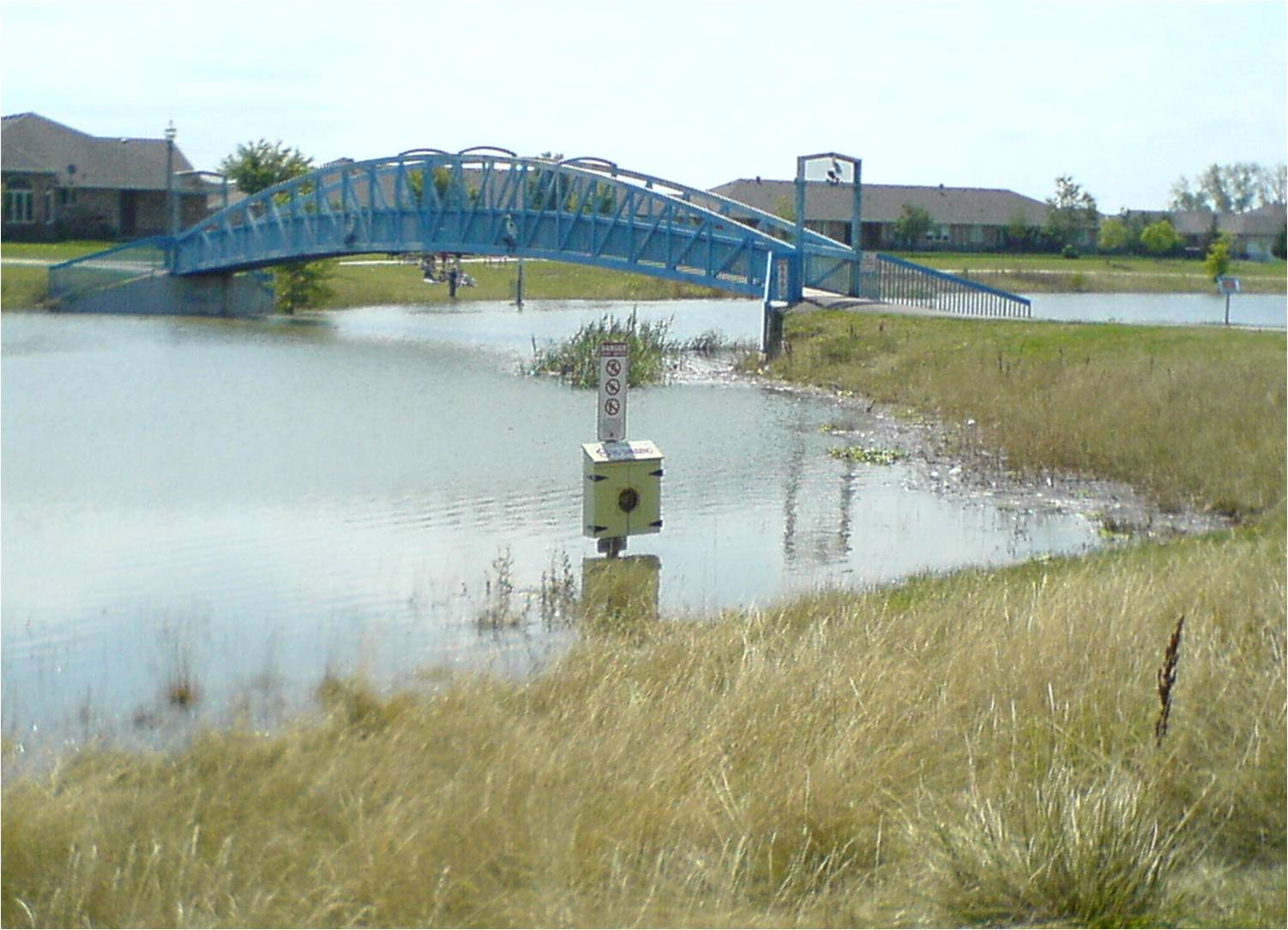Stormwater Management Ponds
A stormwater management pond is an artificial pond that is designed to collect and hold stormwater. The stormwater management pond’s primary function is stormwater management, not recreation.
What is Stormwater?
In urban areas, hard surfaces such as roofs and roads cause rainwater to move quickly towards a stormwater sewer. Along the way, the rainwater picks up chemicals such as the fertilizer you put on your lawn, soap you use to wash your car, and waste products from the wildlife that visit the lake, etc. This contaminated water is now called stormwater, and flows untreated into the Detroit River.
During a large rain storm, there may be too much stormwater for our sewers to handle. To avoid flooding, stormwater management ponds collect this extra water and store it until it can be released slowly into the Detroit River, preventing flooding. The ponds also collect suspended solids such as sand and gravel so they will not go into the Detroit River.
Why is the water level low?
The water level of this stormwater management pond will fluctuate month to month. This is to help sustain the aquatic plants living in and around the pond. For this reason, during the winter months the pond will have a low water level, and during the spring and summer months, the water level will begin to rise. Water levels will also vary based on the amount of precipitation we are experiencing. For example, after a rainstorm the water levels may be higher than usual, as stormwater travels to the stormwater management pond. Alternatively, during periods of drought, the pond might be lower than usual. In general, the water level is managed so that, if there is a heavy rainstorm the pond is able to collect and hold stormwater so that it doesn't flood the streets or residential basements.
Why are there dead fish in the pond sometimes?
Fish naturally occur in large bodies of water. Healthy fish populations need the proper amount of dissolved oxygen, spawning areas, and consistent water temperature and pH levels. Sometimes fish mortality will occur in stormwater ponds. The most common causes are low dissolved oxygen levels, spawning fatalities, sudden temperature and pH shifts (after heavy rains) and fish parasites, as well as bacterial and viral diseases.
What can you do to prevent excessive algae growth in the pond?

Algae are naturally occurring plants that live in water. They use energy from the sun, as well as nutrients such as phosphorus and nitrogen to grow and reproduce. In order to prevent large amounts of algae from occurring in the pond, sources of nutrients, particularly phosphorus must be limited. Phosphorus is found in fertilizers and soaps.
The vegetation growing in and around a stormwater management pond provides many benefits to the environment. The surrounding grasses and shrubs provide bank stability and aesthetic benefits. Vegetation also provides water quality improvements by removing soluble nutrients, such as phosphorus, through uptake. The biodiversity of animals is also enhanced by this vegetation.
What can you do to help improve the environmental health of your neighborhood?
-
Reduce or eliminate your use of lawn pesticides, fertilizers and driveway salt.
-
Plant rear lot vegetation to help filter storm water and connect patches of animal habitat.
-
Properly dispose of hazardous waste such as cleaners, paints, solvents and oils at the Hazardous Waste Depot (Call 3-1-1 for more information).
-
Pick up after your pet and properly dispose of pet waste.
-
Wash your car on your lawn or take it to a car wash.
-
Share your environmental knowledge with others.
Warning
For your safety, do not feed the animals; do not swim or ice skate; do not consume fish from this pond; and please keep to the trails.
Pollution Control
Lou Romano Water Reclamation Plant
4155 Ojibway Parkway
Windsor, Ontario
Canada
N9C 4A5
Phone: (519) 253-7217

